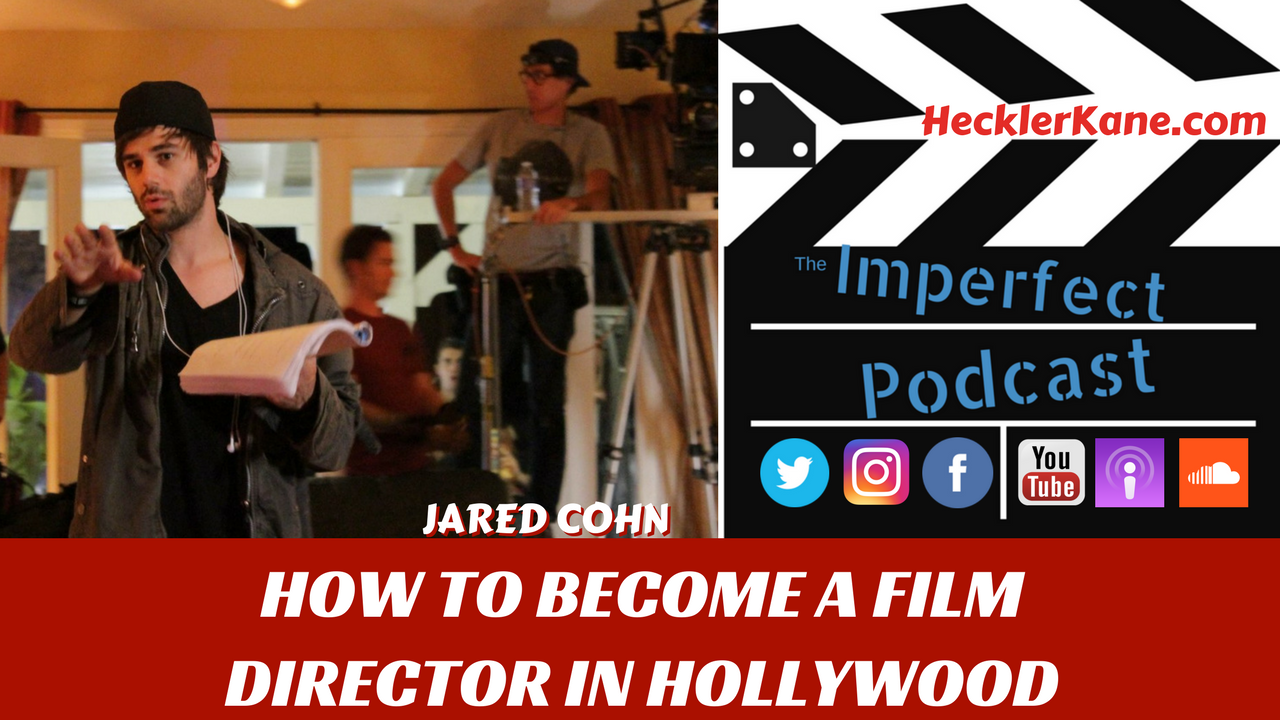Jared Cohn was born in New York and is an avid writer and director. Jared graduated NYIT with a B.F.A in communication arts and works in production while continuing to hone his craft as an actor and filmmaker. He’s also a spiritual person who says he believes in karma.
Jared has quickly racked up 22 directing credits, including Jailbait, Evil Nanny and Born Bad in part due to his relationship with The Asylum, a full service production company. We talk to Jared about his latest film King Arthur and the Knights of the Roundtable, which is an independent film that stands out from the pack. With a slim budget, unique story-line and CGI visual effects to rival the big boys, Jared continues to prove himself as a director worth watching.
Added Bonus! Jared also talks about his future film that will surely be his biggest project to date. He’s producing Street Survivors: The True Story of the Lynyrd Skynyrd Plane Crash.

Watch How to Become A Film Director in Hollywood with Jared Cohn
Interview Highlights with Director Jared Cohn
What brought you to Hollywood?
I’ve been out in Los Angeles for 14 years. I originally came out as an actor and did 30+ movies, TV shows and commercials. Then I started writing and slowly transitioned behind the camera. Now I’m a behind the camera guy and it’s been working out much better. I think that was the universe’s way of telling me to stop acting.
The acting definitely helped the film making. Everything happens for a reason.
How does being an actor effect the way you direct?
Communicating with the actors in a way that they understand better. There’s a lot of technical directors that don’t understand the acting side. They refer to me as an actors director but you still need to know the technical side of things. That’s what I went to school for. When I started directing I was good with the actors but I didn’t know anything about cameras and lighting. I went to the New York Institute of Technology (NYIT) in West Babylon.
What was your first movie as a director?
My first film was self-financed. I took out my life savings on a horror movie that made no money. I ended up doing some work with The Asylum as an actor on Sharknado. I wrote a script to act in myself and they asked me if I wanted to act or direct it. I’m glad I decided to direct it because it was a big movie for Lifetime and I’ve since directed 10 movies for The Asylum. They gave me my break in this crazy industry.
How did you start your relationship with The Asylum?
Acting. I had acted in four movies for them and that’s how I got to know the producers and was able to get them the script. I will always remember that phone call while I was actually in Long Beach Long Island and I was a plane the next day. That was one of the best experiences of my life shooting that movie, Born Bad. It still plays on Lifetime.
I have three movies coming out in May on DVD and VOD including the horror movie Evil Nanny. I try to stay active, an object in motion stays in motion.
How did you get involved with King Arthur & The Knights of the Roundtable?
The writer of Sharknado, Scotty Mullen who is also the casting director at The Asylum, wrote it and we shot it in Thailand. It was produced by The Asylum. It’s a fun, off the wall movie, with giant robots and sword fighting. It’s a wacky take on the King Arthur story if you don’t take it too seriously. It was a tight schedule and budget but I’m familiar with that world. We finished shooting in about 12 days.
What was shooting a film in Thailand like?
At this point I’ve done three movies in Thailand. You have a language barrier but the key personnel of each department speak and relay the info to the crew. Every time I go out to Thailand I end up eating something that fucks up my stomach.
I was walking down the street in Thailand and I pulled out like 4 movies I directed out of cardboard bin.
How integral was the CGI and Special FX to King Arthur and the Knights of the Round Table?
The Asylum team has 15 guys in house doing visual effects and animation. At the time it was head up by Joe Lawson. They are well oiled machine that does everything from composites to 3D modeling. It’s a full in house studio.
There is a learning curve to shooting VFX sequences. We did some green screen shots. I learned a lot shooting Atlantic Rim. You shoot something then you have to unstack it. After you make a few mistakes, the VFX guys yell at you. Having a VFX supervisor on set can sometimes stifle creativity because they want you to lock every shot off. They can motion track the sequences but its more work for them.
The most important thing with shooting visual effects is being able to visualize it and explain it to the actors and the crew. One day it just clicks.
How important is pre-production with a tight shooting schedule?
Pre-production is even more important than production. If you get your pre-production on point then your production runs smoothly. If your pre-production isn’t on point then your shoot will be a disaster. On King Arthur the final sequence was the hardest to map out.
Now when I do movies, if it’s a basic scene with two actors talking I’m not making shot lists or story boards. I used to and then you do it enough to learn what you need on set. I like to design shots on set with the actors and keep the camera moving.
When you’re doing crazy action scenes with very specific shots that you need, then it’s important to write a shot list.
Who did the fight scene choreography for King Arthur and the Knights of the Round Table?
We had a great stunt team, local guys, and one of the actors who played Merlin helped choreograph some of the action. When they weren’t filming I had them practicing because you can’t put together a cool fight on the day. We spent as much time as we could working out the fight scenes.
What was the budget and production like for King Arthur and the Knights of the Roundtable?
It was about $250,000. We shot on a Red Scarlet and had some other toys like a crane dolly. I don’t think we did any handheld shooting.
In Thailand, they shoot a lot of Bollywood movies, so there are some good production services. It’s different how they do it though. Every light comes with a crew guy and that’s his job to move the light. There’s a lot of gear to rent for camera and lighting packages and actually that’s the most expensive thing. It’s not the labor or crew rates, it’s the equipment rental.
Story is more important than the gear. You could have a $100 million dollar movie with a terrible story and it’s going to be a terrible movie and you could have a $100 thousand dollar budget with a great script and make a great movie. It always starts and ends with the story.
What is the distribution plan for King Arthur & The Knights of the Roundtable?
It will be available May 2, 2017 on DVD and VOD. It’ll be transactional VOD first to get as much juice as possible before going to streaming VOD but it really depends on the deal. Every deal is different.
What did you learn from shooting King Arthur and the Knights of the Roundtable?
The biggest takeaway was the choreography from the fight scenes that we had. I put as much time in as we had and it wasn’t enough time. The next movie I did, Locked Up, had a lot of fight scenes it and I made sure they were choreographed before production.
I learned more about visual fx and interactive lighting as well. You grow as a film maker and get more confident. When I first started directing compared to now it’s worlds apart.
Download the episode to hear Jared Cohn talk about his most recent film in pre-production
Street Survivors, The True Story of the Lynyrd Skynyrd Plane Crash

